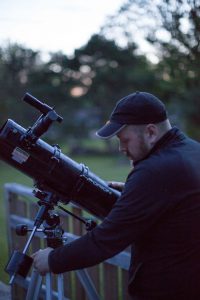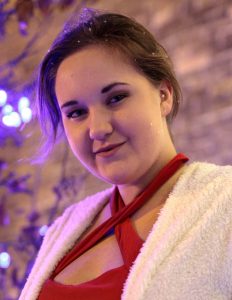
When is a 75mm lens a 50mm lens?
AJ sitting on a ledge was taken in Oshkosh, Wisconsin during a test shoot. This is not technically a 50mm lens shot! What is it? Well, it is a 75mm medium format film shot. So why am I including it in the 50mm gallery?
Angle of view is the key
There are technical lens formulas that determine the focal length of a lens. It is “normal” to define focal lengths in terms of “full frame” sensors. A full frame sensor is a camera sensor that is about the same size as a 35mm film negative. So a 50mm lens produces an image about the size of a 35mm film negative about 50mm from the center of the lens. Simple, yes? No? Maybe?
The math of it is not that important but what is important is that the 50mm lens has an angle of view of about 40 degrees. In other terms, the camera would see about 7 feet wide 10 feet away. This is with a “full frame” camera. So what happens when I use a bigger sensor – like a medium format camera? Well, because the sensor (or film negative) is much wider the camera will see a much wider picture. For a 50mm lens the camera would see 11 feet wide at 10 away.
Medium Format Crop Factor
The math works out that to get the same picture out of a medium format camera as a 35mm / full frame camera I have to use a lens that is 1.6 times longer focal length. So 50mm times 1.6 = 80mm. My medium format camera, a 1980 Bronica ETRS, has a 75mm lens. So the 75mm lens is close enough to 80mm that it is really a “50mm lens” in terms of the picture it produces.
Enough Math – What about the picture?
So This photo was taken with my Bronica ETRS, using Portra 400 film and a 75mm lens. I did use a little bit of fill flash (off camera to the right. I will talk about balancing fill flash with ambient light in a later post – stay tuned!
75mm Zenza Bronica Lens | Bronica ETRS | 1/125 sec at f/4
Here is link so some of my favorite medium format film pics from 2018


